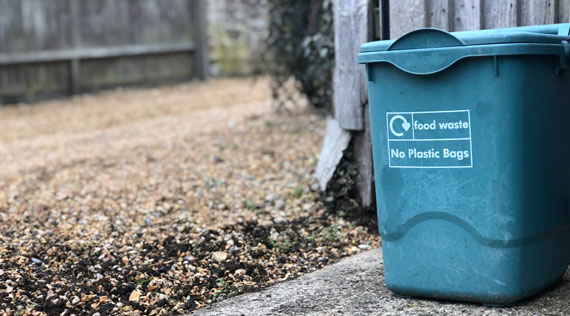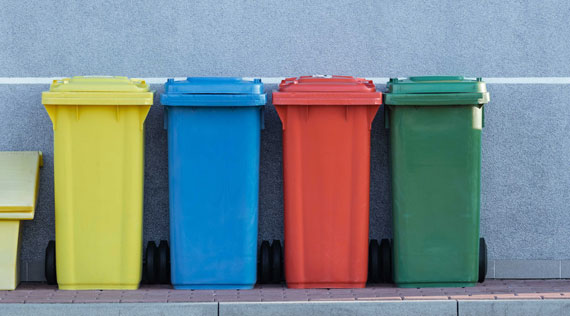LEWISTON - On trash days in Lewiston-Auburn, the sides of curbs reveal a lot of trash and not a lot recycling.
Lewiston-Auburn’s recycling rate is among the lowest in the state because, in part, people are not recycling or are recycling incorrectly. Also, some markets that used to buy recycled materials are no longer buying.
At the sorting facility in Lewiston, once materials that cannot be recycled — plastic bags, grease-stained pizza boxes, cardboard boxes that are not broken down, cans and bottles in plastic bags — are pulled out, Public Works officials estimate the recycling rate is about 8% in the Twin Cities.
“That’s pathetic. That’s really sad is what it is,” said Dana Little of Auburn, the president of the Androscoggin Land Trust.
“It makes me super sad,” said Missy Bilodeau of Auburn, a board member of the land trust. “It’s something that’s so simple to do that makes a big difference.”
But L-A rates aren’t the lowest. Despite Maine’s environmental reputation, recycling programs across the state are struggling, as they are nationwide.
In Bangor, the recycling rate is 4.3%, according to the Maine Department of Environmental Protection. Augusta’s is 6%, according to ecomaine.
Portland’s is better, 38%, but Portland spends money to recycle. In 2017, the city spent $1 million to provide residents with large recycle barrels with attached covers, along with information on how to recycle correctly and avoid contaminating recyclables. Portland residents also must pay for city trash bags or their trash won’t be picked up. The cost is $13.50 for 10 bags and is proposed to rise to $15.
Statewide, the average municipal recycling rate is about 30%, according to the DEP.
Recycling has become more difficult, complicated and expensive, according to officials from Lewiston and Auburn, and the Maine Department of Environmental Protection.
Carole Cifrino, supervisor of recycling programs in the DEP’s Division of Materials Management, said that while statewide recycling is far from the state goal of 50%, there are bright spots. In a few communities, recycling is part of the culture. Bowdoinham, for example, has a nearly 50% recycling rate.
In some parts of Maine, there’s been more composting of food waste, which keeps it out of landfills and incinerators.
And if passed, pending Maine legislation LD 1431 would direct the DEP to establish a new program requiring producers of packaging to help pay for municipal recycling and to design recycling-friendly packaging.
“It would help immensely,” Cifrino said.
NO LEADERSHIP, HIGHER COSTS
Former Auburn City Councilor Mary Kozicki LaFontaine said the low recycling rate didn’t surprise her.
“When I’m out walking on trash days, I see hardly any of the green buckets for recycling,” she said. “We don’t do anything to encourage it. I don’t see any kind of public service announcements or information.”
Recycling containers used to be given to residents of Lewiston and Auburn. Neither city gives them out now because of budget cuts.
Telling people to look at recycling information on the city’s website isn’t good enough, LaFontaine said. She believes the cities should take the lead and provide how-to information and invest in recycling buckets.
“If someone moves here, how do they even know how to recycle? If we’re not giving people the tools, how do we expect people to recycle?” she asked.
Auburn City Manager Peter Crichton said he appreciates LaFontaine’s concern that the city should help citizens recycle, but an education campaign or providing containers takes money. Already, recycling costs Auburn about $75,000 a year.
“Our resources are so limited,” Crichton said.
The Auburn City Council will hold a workshop on recycling as part of the upcoming budget talks. Crichton said he wants to hear “what they want me to do.”
He declined to say whether the recycling program in Auburn might end, continue or improve.
IT DIDN’T CATCH ON IN LEWISTON
In Lewiston, longtime City Administrator Ed Barrett said “recycling has never really caught on, and I can’t really give you a sound answer as to why.” It could be that a lot of residents rent rather than own homes, which could mean they’re more mobile and less attuned to issues such as recycling.
A public education campaign on recycling could improve participation; however, Barrett doubts it would result in a double-digit increase in the participation rate. The City Council has considered and rejected what Portland does, creating incentives for people to recycle by mandating residents pay for trash bags. Lewiston taxpayers expect trash pickup to be covered by property taxes, Barrett said.
Lewiston recommends that residents recycle using a barrel with a recycle sticker and cover to keep materials dry and to help collection crews identify what’s trash and what are recyclables. Too often it’s not clear, said Rob Stalford, Lewiston’s superintendent of solid waste.
“I get frequent calls from people complaining that what they put out to be recycled is going in the trash truck,” Stalford said.
Pickup crews don’t have the ability to pull out materials such as plastic bags or shipping envelopes with plastic that contaminate the load. Workers have to make judgment calls.
The right way to recycle is posted on the Public Works webpage, Stalford said. But that information doesn’t explain that cans and bottles must be rinsed out, pizza boxes can’t have food or grease, cardboard boxes have to be clean and broken into smaller pieces, and recyclables should be in marked containers with covers to keep contents dry.
Stalford acknowledged that information needs to be updated.
For now, Lewiston has a good deal for recycling because of an agreement with Casella Waste Systems, which takes Lewiston’s recyclables for nothing until 2026 in exchange for Casella’s use of city land for its recycling facility.
Lewiston City Councilor Jolene Beam said a recycling committee has been in hibernation until the recently hired Public Works director had a chance “to get his feet wet.” The committee will soon resume work to boost recycling, she said.
ZERO SORT ‘CONFUSING’
Part of the problem, Beam said, is when the city went to zero-sort recycling in 2011, “things got muddled as to what could be put in and what can’t go in.”
Zero-sort recycling, in which various materials are put in the same container, was supposed to increase recycling by making it easier. Instead, it has led to contaminated recyclables.
China, which was a big consumer of recycled materials from the United States, has gotten more particular, rejecting materials it used to buy.
“China doesn’t want to buy our trash,” Stalford said.
And, he added, some people just don’t care about recycling. They figure if they get it to the curb that’s good enough.
One solution could be less focus on recycling and more on reducing packaging, Barrett said.
Another could be pulling back on zero-sort recycling, said the DEP’s Cifrino, adding that it is confusing.
She pointed to recycling codes on materials. Foam meat trays, for example, have a recycling number, yet they aren’t recyclable. And while laundry and milk jugs have good market values, much of the other plastic does not. The wrong kind of plastic contaminates market loads, she said.
There’s a lot that can be done to help people recycle correctly, Cifrino said.
For municipalities that haven’t made big investments in zero-sort recycling, she said they may consider getting rid of zero sort and going back to having residents separate bottles, cans, paper, milk jugs and cardboard.
“The recyclables would be cleaner,” Cifrino said.

